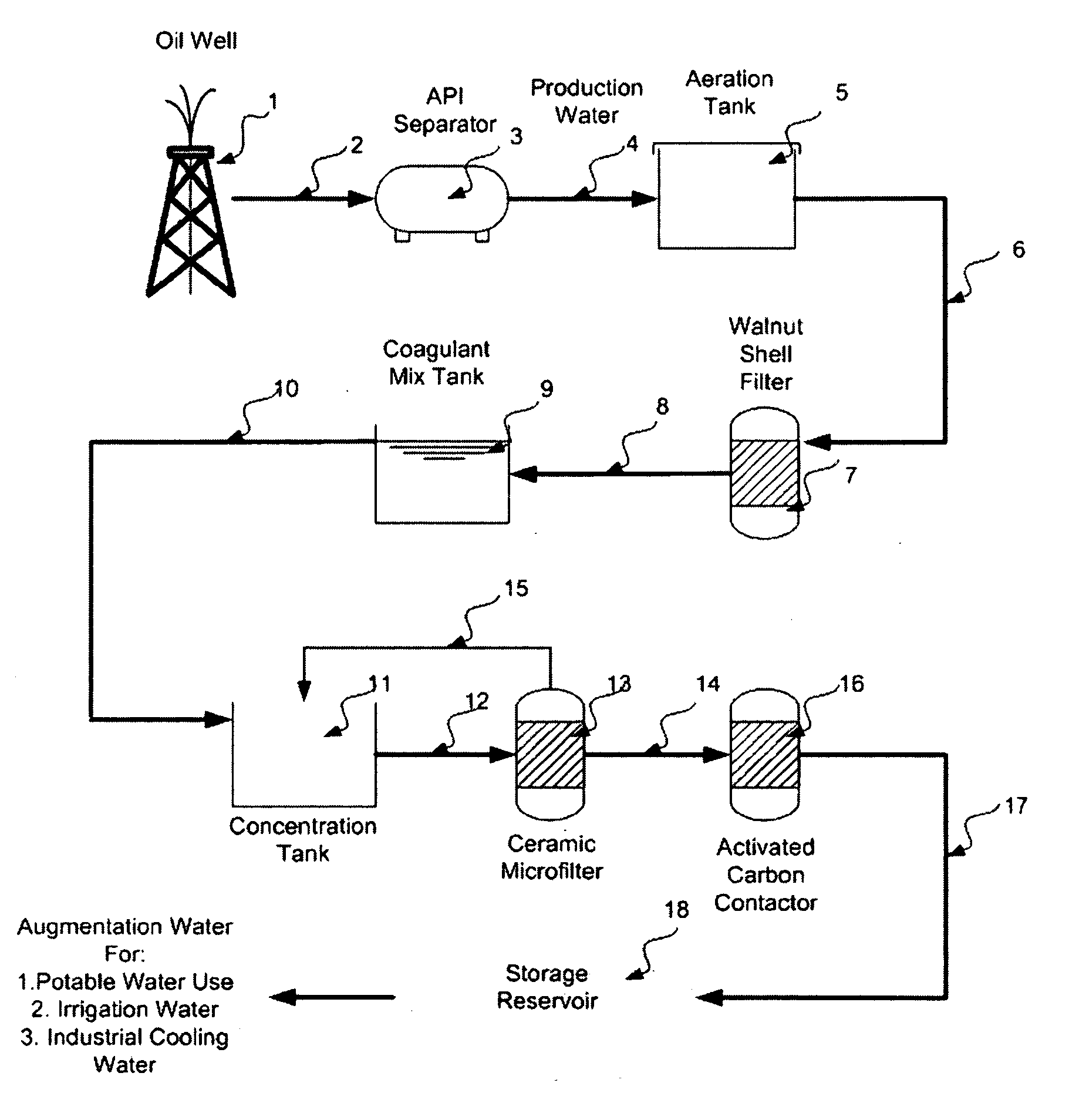Purification of Oil Field Production Water for Beneficial Use
a technology for oil field production and beneficial use, applied in chemical/physical processes, water/sewage treatment by ion exchange, data processing applications, etc., can solve the problems of adding additional costs to the recovery and processing of those hydrocarbons, difficult and expensive task of making production water, and high cost of re-injection
- Summary
- Abstract
- Description
- Claims
- Application Information
AI Technical Summary
Benefits of technology
Problems solved by technology
Method used
Image
Examples
Embodiment Construction
[0030]One preferred embodiment of the present invention is depicted in FIG. 1 (a process schematic) and the following description.
[0031]Oil field production fluids 2 recovered from a well 1 are subjected to a separation process in a “knockout” tank or “API” separator unit 3 where water and oil separate under gravity conditions. Typical API units include water separation systems such as Envirex API Oil Water Separators available from US Filter Corporation recently acquired by Siemens AG and now known as “Siemens Water Technologies” headquartered in Warrendale, Pa. In addition it is desirable to add a “reverse breaker” to the knockout tank to assist in the removal and separation of emulsified oil. Appropriate “reverse breaker” compositions include a metal chloride, such as aluminum chloride, commercially available as “Petrolite” available from Baker Hughes Petroleum, Inc. in Sugar Land, Tex.
[0032]The oil overflow from the knockout tank is then processed through a heater treater unit (...
PUM
| Property | Measurement | Unit |
|---|---|---|
| Pore size | aaaaa | aaaaa |
| Pore size | aaaaa | aaaaa |
| Pore size | aaaaa | aaaaa |
Abstract
Description
Claims
Application Information
 Login to View More
Login to View More - R&D
- Intellectual Property
- Life Sciences
- Materials
- Tech Scout
- Unparalleled Data Quality
- Higher Quality Content
- 60% Fewer Hallucinations
Browse by: Latest US Patents, China's latest patents, Technical Efficacy Thesaurus, Application Domain, Technology Topic, Popular Technical Reports.
© 2025 PatSnap. All rights reserved.Legal|Privacy policy|Modern Slavery Act Transparency Statement|Sitemap|About US| Contact US: help@patsnap.com



